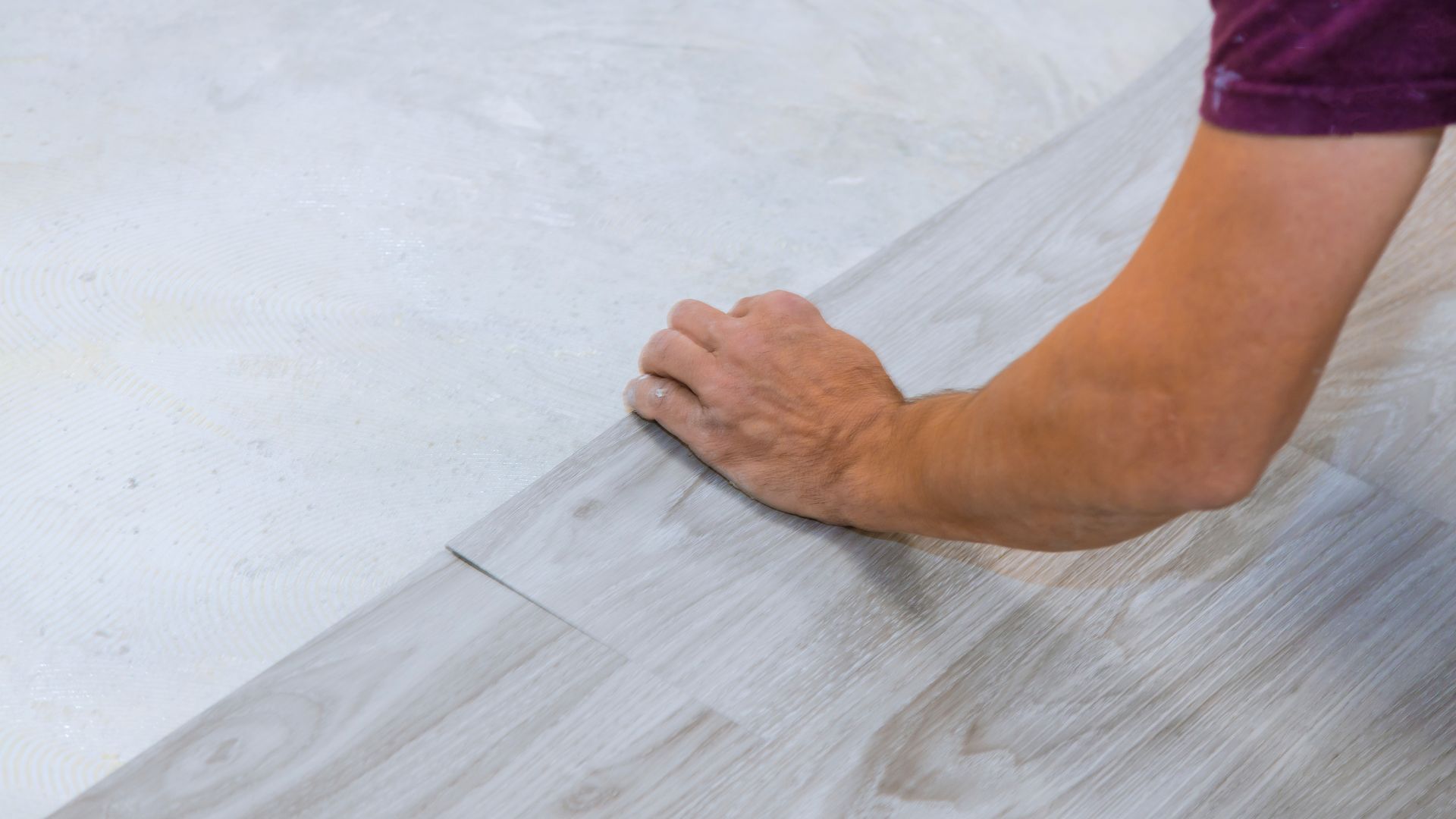Lifestyle
Why LVT Flooring Is Gaining Popularity In The Commercial World

In recent years, luxury vinyl tile (LVT) flooring has become increasingly popular in commercial settings such as offices, schools, and retail stores. LVT is a versatile, durable, and cost-effective flooring solution that offers a range of benefits for businesses looking to upgrade their space. Let’s take a closer look at why LVT is gaining popularity in the commercial world.
Low Maintenance Requirements
Unlike natural materials such as hardwood or stone, LVT requires very little maintenance compared to other types of flooring. It doesn’t require sealing or polishing and can easily be swept or mopped regularly. It also means fewer calls to commercial flooring maintenance services.
Durability
Another one of the main reasons why LVT has become so popular in commercial settings is its durability. LVT flooring can stand up to heavy foot traffic and everyday wear and tear much better than other types of flooring, such as carpet or hardwood. It also resists scratches and dents, which makes it ideal for high-traffic areas where spills are likely to occur.
LVT is comprised of several layers of synthetic materials. It starts with a backing layer made from PVC, formaldehyde-free glue, and one or more fiberglass reinforcement layers. On top are two other vinyl layers with various textures for decoration and a transparent protective coating for added durability and stain resistance.
Some LVT flooring also has a noise-reduction cork underlayment for extra sound insulation and comfort underfoot. All these layers work together to create an ultra-durable surface that looks great and stands up to your busy workplace.
Design Options
Another reason LVT is gaining popularity in the commercial world is its wide range of design options. From wood-look planks to ceramic tile styles, plenty of designs are available to choose from to find the perfect style for your space. What’s more, these designs come with realistic textures that make them look just like natural wood or stone floors—without all the maintenance that comes with those materials.
Cost-Effective Option
In addition to being low maintenance, LVT is also one of the most cost-effective options for commercial flooring solutions. While hardwood may seem like an attractive choice from a design standpoint, it often comes with expensive installation costs and ongoing maintenance requirements that make it less appealing financially. On the other hand, luxury vinyl tile offers comparable design options without breaking the bank—making it an attractive option for businesses on a budget who still want quality flooring solutions in their space.
Comfort & Safety
The cushiony feel of LVT provides extra comfort underfoot when standing for long periods—making it an excellent option for kitchens or retail stores where employees may spend extended hours on their feet each day.
Additionally, it offers excellent slip resistance, which helps prevent accidents from occurring due to slippery surfaces—something essential for businesses with children or elderly customers regularly walking through the space.
Easy Installation Process
Finally, one more benefit of using luxury vinyl tile in your commercial setting is its easy installation process! Many businesses opt for “floating floors,” which require no adhesive or nails during installation—simply lay down each piece individually until you have covered your desired area! So if you’re looking for an easy way to upgrade your office or retail space quickly and efficiently, luxury vinyl tile may be just what you need!
Conclusion
Luxury vinyl tile flooring can give your business a lot of perks, from fewer calls to commercial flooring maintenance services to design flexibility. For companies looking for a high-quality yet affordable flooring solution that stands up well against wear and tear, there isn’t anything better than LVT flooring nowadays.
So whether you’re renovating an existing space or starting from scratch, LVT should be on your list when considering what type of floors will best suit your business environment!
Lifestyle
The Future of Education Through Patricia Vlad’s Eyes

The traditional systems that once defined learning, rigid curricula, standardized testing, and a narrow focus on academic performance, are increasingly being questioned. And why is that?
Starting in the 1880s, thinkers like John Dewey advocated for a shift in teaching methods, leading to the rise of progressive education. Unlike traditional models that emphasize rote learning and job preparation, progressive education puts students at the center of the learning experience. Changemakers like Patricia Vlad also believe that hands-on, experiential learning is the key to deeper understanding. This approach prioritizes critical thinking, curiosity, and personal passions, encouraging students to become lifelong learners who actively engage with new ideas and problem-solving. Schools and parents that embrace this model focus not just on what students need to know but on how they can continue to grow and adapt throughout their lives.
As the world changes, so do the skills, knowledge, and adaptability students need to succeed. The future of education is about personalization, inclusivity, emotional intelligence, and meaningful learning experiences.
With years of global teaching experience, Patricia has seen firsthand how different education systems approach learning. She believes that the future of education must embrace neuroscience, technology, and self-awareness to create a system that is not just efficient but also empowering for students.
“Education should be about more than just passing tests. It should equip students with the skills to navigate life, understand their strengths, and feel empowered in their learning journey,” Patricia emphasizes.
The Future Belongs to the Emotionally Intelligent
Unlike technical skills that may become obsolete with automation, EI – our ability to understand and manage emotions, build relationships, and navigate challenges, remains uniquely human. It plays a crucial role in self-awareness, resilience, effective communication, helping individuals excel in both personal and professional life.
When it comes to EQ, think of it like this: Kids with strong emotional intelligence are better at handling stress, resolving conflicts, and overcoming challenges. Studies suggest that EQ is a stronger predictor of long-term success than IQ. And let’s be real, no matter how advanced AI gets, it will never replace the depth and impact of human connection.
How LevelUp Cultivates Emotional Intelligence Through Patricia’s Coaching
1. Learning Will Be Personalized and Strength-Based
Instead of forcing students to fit into a system, education will be tailored to each child’s learning style, strengths, and interests. Neuroscience-backed methods – such as learning based on attention spans, emotional regulation, and brain development research – will be used to create adaptive learning environments, allowing students to progress at their own pace.
Through tools like LevelUp, which incorporates the Big Five Personality Model, teachers and parents will have a better understanding of a child’s cognitive profile, enabling them to offer more personalized support.
2. Emotional Intelligence Will Be a Core Part of Learning
The future classroom won’t just cover maths, science, history, or even language – it will also focus on self-awareness, empathy, and social skills. As research shows language doesn’t just communicate thought; it actively shapes it. The intentional use of language can influence how the brain processes emotion, memory, and social connection – making it a powerful tool for developing emotional intelligence.
LevelUp integrates EI into its framework, ensuring students not only understand themselves better but also build confidence, manage stress, and develop strong interpersonal skills.
3. Education Will Be More Interdisciplinary
The future of learning will move away from isolated subjects and toward interdisciplinary education, where concepts from different fields are connected and applied to real-world problems.
For example, students might blend neuroscience with psychology to understand learning processes or combine technology and art to develop creative solutions.
4. Technology Will Support, Not Supplant Human Connection
In the classroom of the future, meaningful engagement between students and teachers will remain at the heart of learning. Peer collaboration, hands-on projects, and real-time feedback from teachers will continue to be irreplaceable elements of education.
Technology will play a supporting role enhancing, rather than dominating, the learning process.
Whether through gamified modules, virtual simulation, or adaptive platforms, tools like LevelUp will be used intentionally to deepen understanding and personalize feedback, always in service of human connection, not as a substitute for it.
5. Schools, Parents, and Students Will Work Together
Education won’t be confined to the classroom. Parents will play a bigger role in guiding their children’s learning, using tools like LevelUp to track progress, support emotional development, and encourage curiosity at home.
By strengthening the parent-child-teacher connection, education will become a team effort, ensuring every student receives the support they need to reach their full potential.
A Future Built on Empowerment
By combining neuroscience, technology, and emotional intelligence, Patricia is helping to reshape education into something that prepares students not just for exams, but for life itself.
A truly effective education system values each student’s creativity and passions—not just their ability to recall information. Instead of just delivering information and expecting rote memorization for test scores, teachers encourage active, hands-on learning through projects, experiments, and peer collaboration. This approach allows students to explore topics that genuinely interest them, making learning more engaging, meaningful, and personal.
The LevelUp platform, developed under Patricia’s leadership, is contributing to a growing shift toward education that is rooted in self-awareness and real-world readiness. Additionally, emotional intelligence is a core part of learning, not an afterthought.
One story that sticks with Patricia is that of a student named Ethan, who had always been labelled “distracted” in class. His teachers described him as bright but inconsistent, often zoning out or fidgeting during lessons. When his LevelUp profile revealed high reactivity and strong openness, a new picture emerged: Ethan wasn’t disengaged—he was overwhelmed by too much information at once and thrived when topics were explored through hands-on, creative activities.
With this insight, his teacher began breaking tasks into smaller steps and introducing art and building projects tied to the curriculum. For the first time, Ethan started raising his hand during class and even stayed back after school to show his work. “We’d been trying to ‘fix’ him when all we needed was to understand him,” his teacher later shared.
It was a small shift, but for Ethan, it changed everything.
-

 Tech5 years ago
Tech5 years agoEffuel Reviews (2021) – Effuel ECO OBD2 Saves Fuel, and Reduce Gas Cost? Effuel Customer Reviews
-

 Tech6 years ago
Tech6 years agoBosch Power Tools India Launches ‘Cordless Matlab Bosch’ Campaign to Demonstrate the Power of Cordless
-

 Lifestyle6 years ago
Lifestyle6 years agoCatholic Cases App brings Church’s Moral Teachings to Androids and iPhones
-

 Lifestyle5 years ago
Lifestyle5 years agoEast Side Hype x Billionaire Boys Club. Hottest New Streetwear Releases in Utah.
-

 Tech7 years ago
Tech7 years agoCloud Buyers & Investors to Profit in the Future
-

 Lifestyle5 years ago
Lifestyle5 years agoThe Midas of Cosmetic Dermatology: Dr. Simon Ourian
-

 Health7 years ago
Health7 years agoCBDistillery Review: Is it a scam?
-

 Entertainment6 years ago
Entertainment6 years agoAvengers Endgame now Available on 123Movies for Download & Streaming for Free
